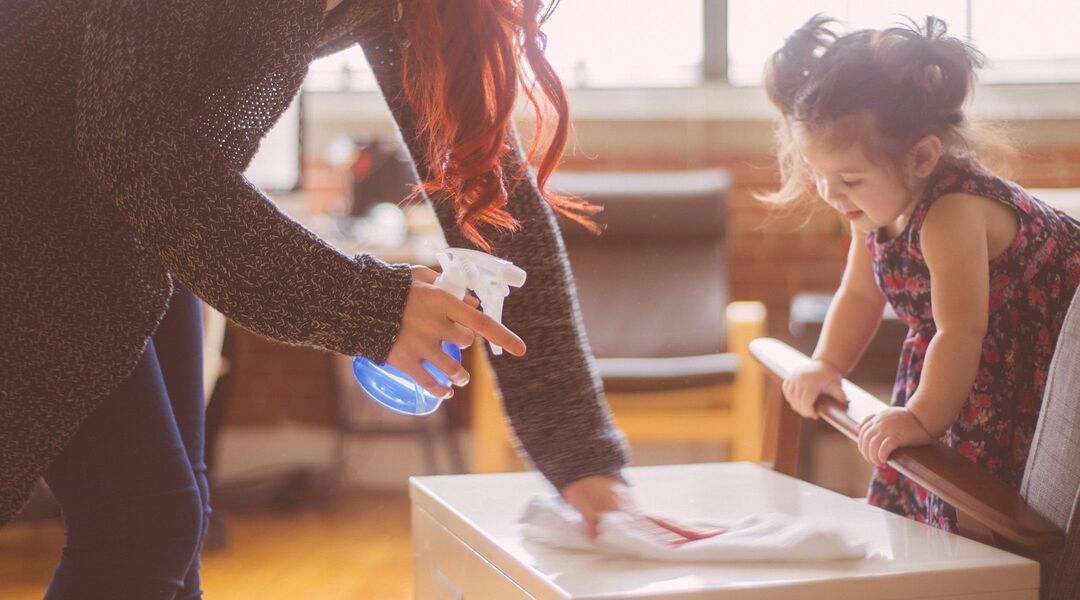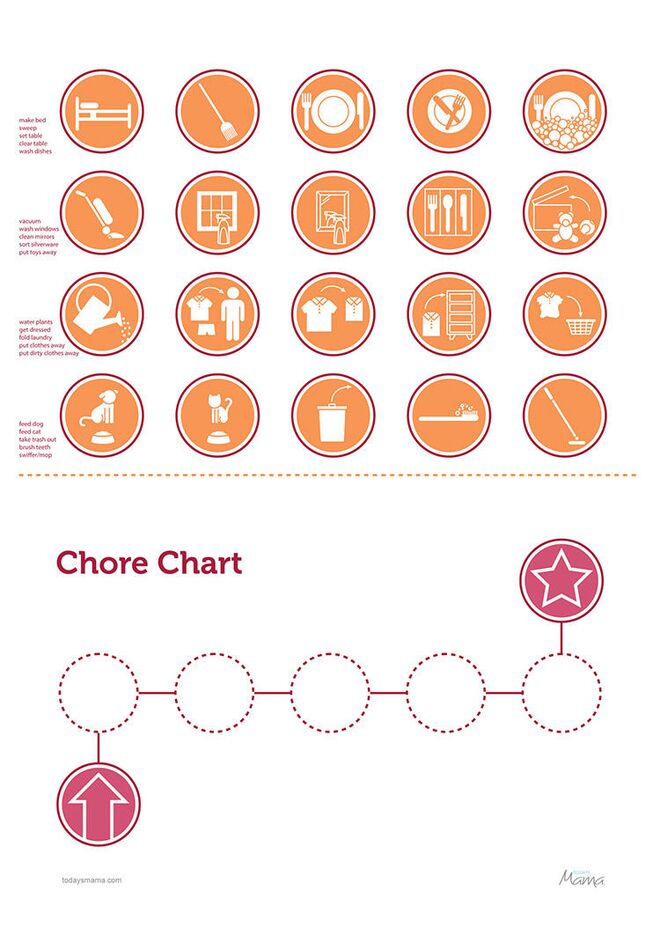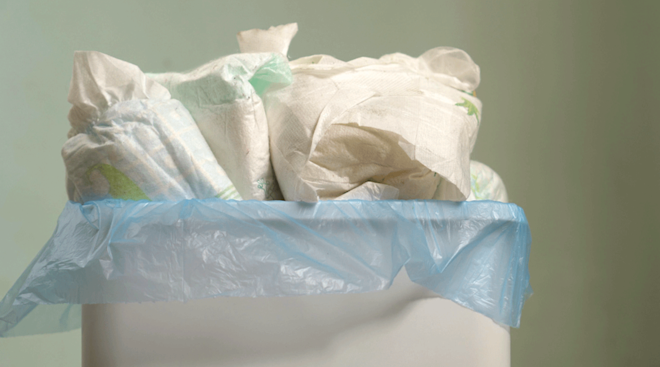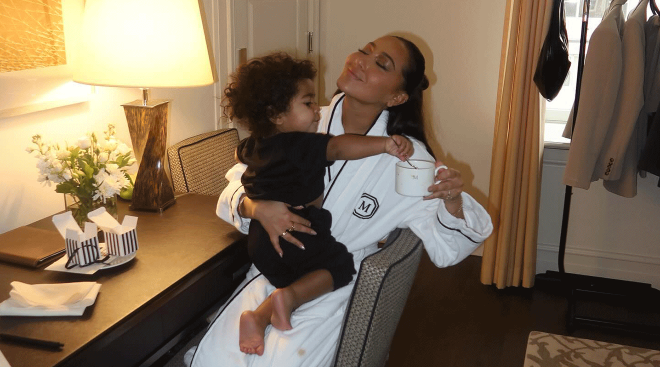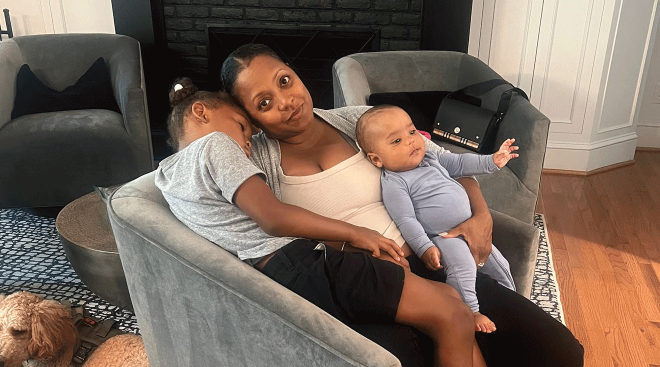Here’s How Chores Actually Make Your Kids Better Adults
I’m a big believer in chores for kids. My boys have been putting their toy trains, cars and action figures in their proper bins since toddlerhood. They’ve been tasked with laundry sorting, table clearing and even the eww-inducing grossness of composting since preschool. But judging by the amount of side-eye I used to get from other people’s kids (and some moms), I’ve always suspected I was in the minority when it came to chores for kids. It turns out, I am.
According to a 2014 survey of over 1,000 parents, only 28 percent dole out regular chores for kids. “Parents often think kids should be kids and that chores make them grow up too soon,” says Marty Rossmann, an emerita professor of family education at the University of Minnesota. “Plus, they don’t want to listen to complaints or be burdened with redoing poorly executed tasks.”
I admit I’ve done a few secret do-overs, like when my kids did what looked like a pantomime of cleaning the windows. Marieke Lewis Brock, a mother of one in Washington, DC, on the other hand, isn’t too bothered when her child does a less-than-perfect job from his chore chart. “My son is going to make a mess whether he’s helping or not, so I’d rather have him helping,” she says. Case in point: Lewis Brock’s 2.5-year-old clears his plate after dinner and regularly spills bits on the floor on his way to the sink. “I just tell him it’s okay and that he needs to clean it up. Now he knows how to wipe the floor too!”
Should kids have chores?
With kids potentially making more work for you as they “help” with chores, you may wonder: Are you expecting too much of your child? Should kids have chores? Rossmann says to ease up on the parental guilt about creating a chore chart. After studying 25 years of data on the topic of chores for kids, she found that people who performed chores as children were more likely to develop into well-adjusted, successful adults. “Chores help to develop a sense of independence, responsibility, self-esteem and altruism, even for small children,” she says.
That’s been the case for Marcie Cheung, a mother of two from Renton, Washington, who says, “Chores give my 3-year-old the feeling of accomplishment and pride, and he thrives on it.” Her son’s chore chart includes cleaning up his toys. Cheung will often spy him putting his toys away on his own before getting out new ones. “I always tell him how proud I am each time he does this,” she says.
Beyond helping your child develop good habits early on, a family chore chart also gently nudges a child away from a “me” mentality and toward a “we” mentally, says Alexandra Barzvi Silber, PhD, a clinical assistant professor of psychology at the NYU Child Study Center in New York City. “You’re teaching children that they’re an important and valuable member of the family unit—that they’re capable of contributing in a meaningful way to the well-being of the family.”
When to start chores for kids
When it comes to chores for kids, the sweet spot is age 2 to 3, says Elena Mikalsen, PhD, a clinical psychologist and head of pediatric psychology at Baylor College of Medicine in San Antonio. That may sound young, but keep this in mind when creating a chore chart for kids: For toddlers, there’s no real difference between fun, education and chores; they’re just as happy sorting laundry as they are sorting colored blocks. “Toddlers are very interested in adult behaviors and want to engage in these same behaviors, making it the perfect time to start modeling chores for them,” Mikalsen says.
Also, kids who are given age-appropriate chores at a young age grow up to be teens who continue to help out mom and dad. “I’ve met many families with two or three teens, where parents are overwhelmed with still doing all the chores because they never taught their children how to help around the house when they were little,” Mikalsen says. “If you start early, you’ll have a household of great helpers who know about responsibility.”
Age-appropriate chores for kids
Before handing out chores for kids, parents need to figure out what their child can actually handle and (gasp!) even enjoy. The key for a chore chart that works: making sure you’re giving your child age-appropriate chores. “Chores for kids should feel like play—and they should be given tasks they can handle developmentally,” Mikalsen says. “Remember, toddlers can’t focus for more than a few minutes, so stick with one-step chores that you do with your child.” (It’s all about mirroring behavior at this age.) When kids get to preschool age, you can graduate to a two- or three-step chore chart. Here’s a list of chores for kids that works for toddlers and preschoolers:
• Clean up toys. For toddlers, capitalize on their budding desire to sort when tidying up. Play a cleanup game where you both toss all the blue blocks in a bucket. Next, the red ones! By age 4 or 5, kids can start sorting by category better. For example, all animals go in this bin; all dolls go in that bin. Counting is also a newfound skill kids will love to show off, so take advantage. (“Let’s put five rubber frogs in the bin!”)
• Put laundry in the hamper. Little ones can also help take out clean clothes from the dryer and sort laundry by color. Sorting and matching clean socks is also fun for toddlers and preschoolers.
• Place dirty sippies in the sink. Once your child reaches preschool age, she can also take dirty dishes to the sink and load the dishwasher with nonbreakables. (If you use plastic tableware, setting the table can happen around now as well.)
• Toss trash in the wastebasket. For toddlers, add tossing garbage into the wastebasket to their chore chart. Once they reach preschool age, expand the job to emptying small trash cans from around the house into a larger garbage bin.
• Wash and scrub fruits and veggies. This is a safe and fun way for toddlers to participate in meal prep. As kids get older, add sandwich making and toasting bread to the mix (with supervision, of course).
• Wipe up messes. Cleaning up spills is a great toddler task. If your preschooler can handle spills, promote them to dusting too.
• Feed pets. While this chore for kids requires fine motor skills that are still out of reach for toddlers, preschoolers adore the task filling water dishes and pouring kibble into kitty and doggie bowls.
• Make the bed. For those in toddler beds and big-kid beds, this simply means pulling the covers up and putting the pillow in the proper position.
Do you need a chore chart? No. Will it help? Probably. “A chore chart is a really excellent way of keeping children on task and reminding them of what needs to be done,” Silber says. “It’s also a great way of tracking what does and doesn’t get done.” There are many creative ways to construct a kids’ chore chart, but the most important things to keep in mind are that the chart must be used consistently and tracking the results has to happen in order for it to be effective. (While you can create a kids’ chore chart, children might actually get a kick out of a family chore chart, which tracks what parents do around the house too.)
Chore chart ideas
If you do commit to using a chore chart (either a family chore chart or a kids’ chore chart), the best ones are fun and tactile understandable even to nonreaders. Here, some chore chart ideas to get you started:
1. Flip-the-flap chore chart. You’ll need card stock, clip art of various chores for kids and some magnetic strips to create a hands-on chore list. Here, the flaps open to reveal a picture representing a chore. Once the task is complete, your child shuts the flap (it sticks to the magnet), and “Done” appears on the outside of the flap. For detailed instructions, check out this chore chart template.
2. Race track chore chart. For this creative chore chart idea, swipe three to five toy cars from your kid’s stash. Next, hit the office-supply store for a framed, magnetic chalkboard; three to five round magnets; a white chalk marker; and a trusty glue gun. Glue the magnets on the underside of each car. While that dries, use the chalk to draw a path with a start and finish line. Along the pathway, map out chores and let your child “drive” the cars to the finish line as they hit each chore milestone. For detailed instructions, check out this chore chart template.
3. Magnet chore chart. Paint (or not) a new baking sheet and use letter stickers to label the top half “To Do” and the bottom half “Done.” Next, glue magnets to the backs of wooden craft circles. On the flip side, glue on clip art that represents each chore your child is responsible for. Here, the child can move his tasks from “To Do” to “Done” each day. For detailed instructions, check out this chore chart template.
4. Low-tech chore chart. There’s also the easy, no-reading-required printable chore board. Here, you can simply laminate your chore chart and let your child use a dry-erase marker to cross off each task. For detailed instructions, check out this chore chart template.
Motivating kids to do chores
While a chore chart can help to motivate kids, there are additional ways to ensure your child’s chore list becomes a want-to-do list.
• Tweak your language. When talking about chores for kids, using the word “helper” has been shown to motivate 3- to 6-year-olds significantly more than using the word “helping,” notes a 2014 study published in the journal Child Development (“Be a good helper and clean up your toys” versus “Help clean up the toys”). Apparently, using the noun “helper” directs positive attention toward your child’s identity, which is more motivating than using verbs like “helping,” which is making a request.
• Connect praise to the impact. “Praising children effectively is the best motivation because nothing feels better than parent approval,” Silber says. So instead of saying, “Great job!” or “You’re awesome!” tell your child exactly what you appreciated and why. For example, “Thank you for putting the napkins on the table. That was a big help to get dinner ready.” “If they know exactly what they did that made you feel good, they are very likely going to repeat it,” Silber says.
• Use an app as your chore chart. ChoreMonster is an app geared toward kids ages 4 and up. In this virtual chore chart, you can input any chore with a corresponding point value. By doing chores, kids earn points that can be instantly redeemed for virtual rewards, like silly and short monster videos they can watch through the app. Or stockpile points toward rewards assigned by parents, like 50 points unlocks a mommy-and-me bike ride in the park, or 25 points to earn 30 minutes of iPad time. (Free on iTunes, GooglePlay, and on Kindle Fire; ChoreMonster.com)
• Reward the good with good. Brittney Hanks found her kids weren’t as excited about doing chores and needed different motivation as they got older, so she added an incentive system once her kids hit age 4. “They’re able to earn half of their age in dollars if they complete all their chores each week,” says Hanks, a mother of four from Flower Mound, Texas. “The kids are then required to put a certain percentage aside right away for savings and for charity. What’s left is theirs to spend how they chose. They love it!”
• Gamify it. “You can get a toddler to do most things with praise, but as kids get into the preschool years, you may need a little more,” Mikalsen says. The good news: You can morph most chores for kids into a game. “You can even make feeding the family pet into a game,” she says. “Let’s see how fast the kitty will run to her bowl after we put food into it! You’ll see your child quickly comply.” Set a timer to clean up a toy-strewn floor (10 minutes to tidy!); use the hamper as a basketball hoop to toss laundry in; hide “prizes” behind items that need to be dusted, to be found only when the work is getting done; the chore list is endless.
• Build a just-for-kids chore stash. Get a kid-size broom that’s just for your child or shorten the handle on a Swiffer so it’s perfectly sized for a child. Have your child decorate an old handheld vacuum with stickers. Fill a bright caddy with safe-for-kids cleaning supplies—anything that makes your child feel ownership of their chore chart.
My one-time block sorters and tiny broom wielders are now grade-schoolers, and all their toddler and preschool chores are really paying off. Just the other week, I got a text from a fellow mom. My oldest was at her house for dinner. “He cleared his plate. I never even asked. I hope it rubs off on my kids!” she wrote. I beamed. That’s my boy. Because, really, don’t we all just want good little citizens, ones who’ll be invited back to dinner?
Published July 2017
Navigate forward to interact with the calendar and select a date. Press the question mark key to get the keyboard shortcuts for changing dates.
































